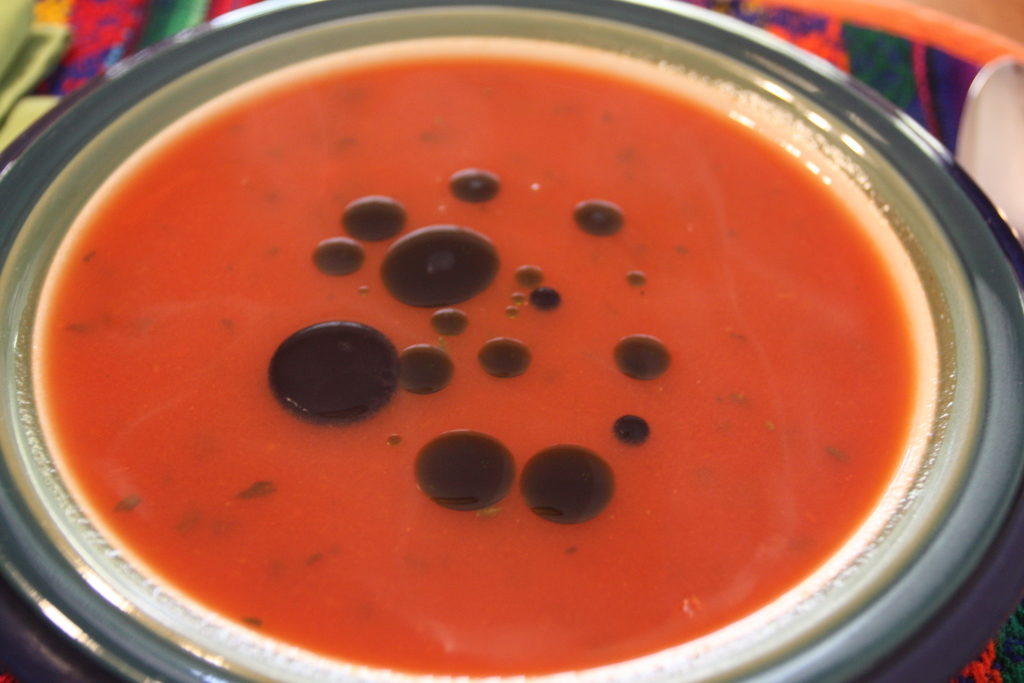
Yesterday, we mentioned that we had our Primavera Risotto with Fennel Oil, and that the fennel oil was really an optional ingredient. Oils like this are really there for the color and show; they don’t add too much flavor, but, we do make them from time to time, mainly when we have some herb in abundance. So, this past week, when we picked up a huge fennel bulb with fronds attached, we knew fennel oil was going to be in the works.
Now, you can scratch up some of this fennel oil, but it doesn’t have to be fennel. You can use pretty much any fresh herb to make your own Herb-Infused Oil. While we give detailed directions in the preceding link, we’ll quickly go over the technique right here, too.
Fennel Oil
Ingredients
- 1 bunch fennel fronds tough stems removed
- 1/4-1/2 cup canola oil
Instructions
- Bring a large kettle of water to a rolling boil.
- Submerge fennel fronds and cook for 1 minute. Drain and immediately stop cooking by running under cold water.
- Squeeze out excess water, transfer to a clean dish towel, and squeeze dry.
- Place in a blender with 1/4 cup oil. Blend, adding additional oil, if needed, to make a slurry.
- Transfer to a non-reactive container and refrigerate overnight.
- Line a funnel with a piece of butter muslin and strain out oil. Discard fennel fronds.
Ingredient discussion:
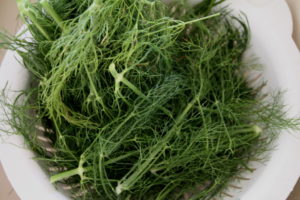
If you don’t have canola oil, use a very light, neutral flavored oil. And, as we said above, this technique should work with any fresh herb.
Procedure in detail:
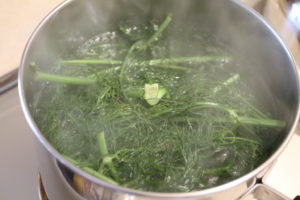
Blanch. Bring a large kettle of water to a rolling boil. Once boiling, plunge the fennel in and press down with a fork or spoon to submerge. It should immediately go limp. Let the fennel come back to a rolling boil for about 1 minute.
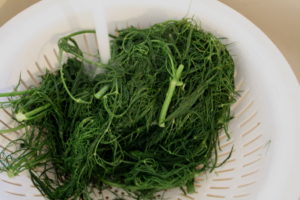
Shock. Drain the fennel and immediately rinse with cold running water. Lift and turn the fennel so that the cold water can stop all the cooking from residual heat. This shocking makes sure that the fennel keeps its nice bright green so you have a beautiful green fennel oil.

Dry. Squeeze out as much water as you can, then place the fennel in a clean dish towel. Squeeze and twist the towel around the fennel until it’s thoroughly dry.
Blend. Place the fennel fronds in a blender with about 1/4 cup oil. Start blending until you have a fennel and oil slurry. If needed, add more oil, so that it will blend into a smooth mixture.
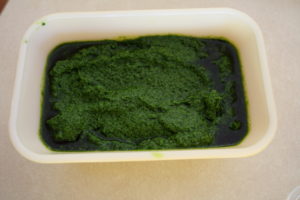
Steep. Transfer the fennel slurry to a non-reactive container — glass is ideal — and let steep in the refrigerator overnight, giving plenty of time for the oil to become infused with flavor.
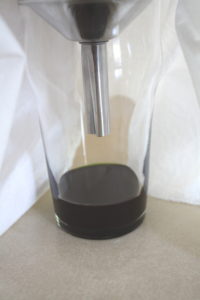
Drain. Line a funnel with a piece of butter muslin, which has a tighter weave than cheese cloth — you don’t want cloudy oil — and place it in a glass. Add the fennel mixture and let drain for several hours. Don’t press, trying to extract more oil, or you’ll push through some fine particles of fennel. Discard the fennel fronds and transfer the oil to a container and store in the refrigerator.
You might wonder how to use this oil. A fair question. So far, we’ve used it to decorate the plates when we served Primavera Risotto (yesterday’s post), drizzled it into Corn Chowder before serving, where it provided a bright green contrast, added it to Basic Pasta Dough to give the pasta a light green tint and slight fennel flavor, and, most recently, added it to a tomato orzo soup we had for lunch. You could also simply use it as a dipping oil for bread. So, it’s quite versatile, and it really isn’t that difficult. Plus, it should keep in the refrigerator for at least a week. Four stars.

